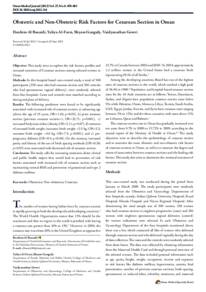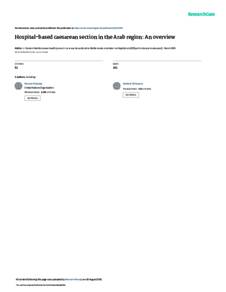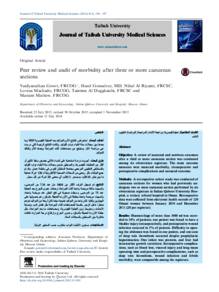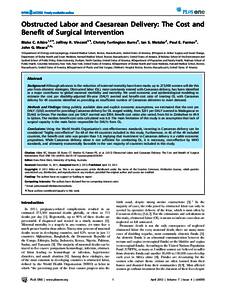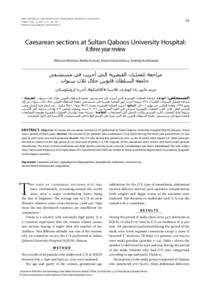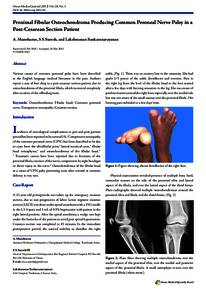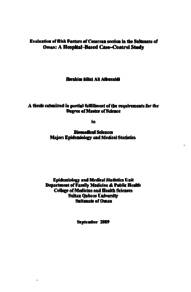Document
Obstetric and non-obstetric risk factors for cesarean section in Oman.
Identifier
DOI 10. 5001/omj.2012.114
Contributors
Publisher
Oman Medical Specialty Board.
Gregorian
2012-11
Language
English
English abstract
Objectives: This study aims to explore the risk factors, profiles and neonatal outcomes of Cesarean sections among selected women in Oman.
Methods: In this hospital-based case-control study, a total of 500 participants (250 cases who had cesarean section and 250 controls who had spontaneous vaginal delivery), were randomly selected from four hospitals. Cases and controls were matched according to timing and place of delivery.
Results: The following predictors were found to be significantly associated with increased risk of cesarean section: a) advancing age (above the age of 25 years, OR=1.42; p=0.03), b) prior cesarean section (previous cesarean section=1, OR=22.71; p=0.001), c) increased body mass index (obesity, OR=2.11; p=0.07), d) extremes of neonatal birth weight (neonates birth weight <2.5 kg, OR=5.2; neonates birth weight >4.0 kg, OR=7.3; p<0.001), and e) prepregnancy diabetes (OR=9.3; p=0.04). On the contrary, increased parity and history of the use of birth spacing methods (OR=0.38; p=0.03) were associated with decreased risk of cesarean section.
Conclusion: The study calls for increasing awareness about clinical and public health majors that would lead to prevention of risk factors associated with increased risk of cesarean section such as maintaining normal BMI and prevention of gestational and type 2 diabetes mellitus.
Member of
Resource URL
Citation
Al-Busaidi, Ibrahim, Al-Farsi, Yahya M., Ganguly, Shyam, & Gowri, Vaidyanathan (2012). Obstetric and non-obstetric risk factors for cesarean section in Oman. Oman Medical Journal, 27 (6), 478-481.
Category
Journal articles

